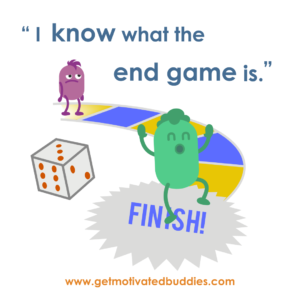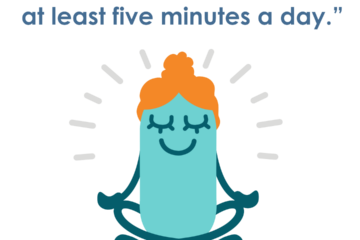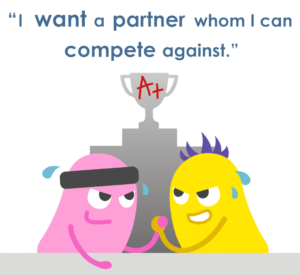Porn Addiction: How to Recognize and Overcome It

Table of Contents
Porn addiction is a growing problem in our society, with more and more people becoming dependent on sexually explicit material to the point where it interferes with their daily lives. Addiction to pornography use may lead to a range of negative consequences, including relationship problems, financial difficulties, and mental health issues. While some experts debate the existence of pornography addiction, in this blog post, we will explore the signs and symptoms of porn addiction, whether it is even considered an addiction, the neuroscience behind it, and effective methods for overcoming excessive porn use.
Recognizing the Signs of Porn Addiction
It’s difficult to identify signs of excessive porn use, as it is not always obvious when the use of sexually explicit material has become a problem. However, if you feel you are watching porn at work or too much porn at home, spending more and more time seeking or thinking about porn to the point that it interferes with your quality of life, or engaging in compulsive masturbation, you may be addicted to porn. Here are several additional common signs and symptoms that can indicate an addiction to pornography.
These include:
- Losing track of time while watching pornography.
- Neglecting important responsibilities or activities in favor of watching pornography.
- Using pornography as a way to escape from stress or negative emotions.
- Feeling irritable, restless, or moody when unable to watch pornography.
- Experiencing relationship problems due to excessive use of pornography.
If you or someone you know is experiencing these symptoms, or has an uncontrollable need to view pornography, or feels like an addict, it is important to seek help as soon as possible.
Is Porn Addiction a Mental Health Disorder?
Porn addiction is controversial, in particular how it is labeled and defined. The American Psychiatric Association (APA) has not officially recognized pornography addiction as a mental health disorder. The Diagnostic and Statistical Manual of Mental Disorders (DSM), do not classify compulsive pornography consumption as part of the behavioral addiction model or as a mental disorder. The World Health Organization’s ICD-11 (2022) has recognized compulsive sexual behavior disorder (CSBD) as an impulsive control disorder, but likewise do not considered it an addiction. However, for those mental healthcare professionals who have witnessed that pornography is addictive for their clients, they consider it to be a form of behavioral addiction, similar to other forms of addiction such as gambling disorder or substance use disorder.
Behavioral addiction is characterized by an inability to control the use of a specific behavior, despite negative consequences. Many of the signs and symptoms of behavioral addiction, such as neglecting responsibilities, experiencing relationship problems, and feeling irritable or restless when unable to engage in the behavior, are similar to those seen in other forms of addiction. Therefore, some mental health professionals may diagnose an individual with pornography addiction if they are experiencing significant distress and dysfunction as a result of their use of pornography.
Is Porn Addiction Sex Addiction?
Sexual addiction refers to a range of behaviors that are characterized by an inability to control one’s sexual impulses or behaviors. This can include consumption of pornographic materials, but it can also include other behaviors such as excessive masturbation, compulsive sexual behavior with partners, and risky sexual behavior.
Individuals who are addicted to pornography may also struggle with other forms of sex addiction, and vice versa. However, it is important to note that not everyone who struggles with pornography addiction or sex addiction will struggle with both. Some individuals may only experience problems with one or the other. Additionally, not everyone who engages in sexually explicit material or who has a high sex drive will necessarily be addicted to pornography or sex. It is only when the behavior becomes compulsive and causes significant distress and dysfunction that it may be considered an addiction, for example, if watching “too much” pornography.
Depression and Porn Addiction
The relationship between depression and porn is complex. On the one hand, some people use porn as a way to cope with their depression or loneliness. They may use it as a form of self-soothing or distraction from difficult emotions. On the other hand, porn can also be a source of stress and anxiety, both of which are linked to depression. Studies have found that people who watch porn may struggle with negative thoughts and feelings such as guilt or shame. Additionally, there is evidence that regular use of porn can lead to decreased motivation, which can further contribute to depressive symptoms. Ultimately, it appears that while porn can provide some temporary relief for those struggling with depression, it could also be exacerbating their symptoms in the long run.
The Neuroscience of Porn Addiction
Like other addictions, porn addiction may be a form of behavioral addiction, which means that it is characterized by a compulsion, an individual’s inability to control their use of a particular behavior, which can lead to harmful effects. This type of addiction is thought to be related to the parts of the brain that process pleasure and rewards, specifically the dopamine system.
Dopamine levels in the brain’s reward pathway, which is composed of the ventral tegmental area, the nucleus accumbens, and the prefrontal cortex, are used to determine the addictive potential of a behavior or drug. Higher levels of dopamine released quickly in this pathway are associated with a higher addiction risk. When we engage in pleasurable activities, such as eating, sex, or drug use, and contributes to what’s called the pleasure-pain balance. With addiction, the dopamine system becomes imbalanced, leading a decreased ability to feel pleasure from other activities, including porn itself, and increased pleasure seeking. This can result in a negative feedback loop, where the individual becomes more and more focused on the addictive behavior in order to feel pleasure.
The Pleasure-Pain Balance
Pleasure and pain are processed in overlapping brain regions and are regulated by an opponent-process mechanism, which means that they work like a balance that wants to remain level or in equilibrium. This means that every time the balance tips towards pleasure, self-regulating mechanisms kick in to bring it back to level again. This process, known as homeostasis, is the tendency of any living system to maintain physiological equilibrium. With repeated exposure to the same pleasure stimulus, the initial deviation towards pleasure gets weaker and shorter, and the after-response towards pain gets stronger and longer, a process called neuroadaptation. This means that with repetition, the body’s response to pleasure changes and more of a substance is needed to feel the same effect. This is known as tolerance and is an important factor in the development of addiction.
Watching sexually explicit material triggers the release of dopamine, which reinforces the behavior and makes it more likely to continue. Over time, the brain becomes accustomed to the constant influx of this neurotransmitter and may begin to require more and more pornography to achieve the same level of pleasure, which leads to a dopamine deficit. As Dr. Anna Lembke writes in Dopamine Nation: Finding Balance in the Age of Indulgence, “heavy, prolonged consumption of high-dopamine substances eventually leads to a dopamine deficit state”. This pursuit of pleasure then leads to “anhedonia, an inability to enjoy pleasure of any kind.” Much like substance abuse addictions, the individual may feel unable to stop using pornography even if they want to, in an attempt to find that elusive pleasure.
Five Ways to Overcome Pornography Addiction
Treatment for pornography addiction mirrors treatment for other forms of behavioral addictions. If you or someone you know is addicted to porn and are struggling to overcome it, there are several avenues for treatment. Treatment for problematic pornography use can include both professional and self-managed paths:
- Seek professional help. Internet pornography, use of porn, and the effects of porn addiction are complex issues that often require the guidance of a qualified mental health professional. Counselors and therapists can help you to understand the underlying causes of your addiction, explore your relationship with porn, and develop a recovery plan.
- Practice self-care. Taking care of your physical and emotional health is crucial for overcoming addiction. This includes getting enough sleep, eating a healthy diet, and engaging in regular exercise.
- Set boundaries. It is important to set limits on how and when you watch porn and to stick to them. This may involve blocking certain websites or using other methods to abstain for a period of time, and prevent yourself from accessing sexually explicit material. When creating boundaries your goal is to reduce or eliminate access to porn sites.
- Find healthy ways to cope with stress. Pornography addiction is often fueled by stress, so finding healthy ways to cope with stress can be an important part of recovery. This might include practicing relaxation techniques, such as deep breathing or meditation, or engaging in activities that you find enjoyable and rewarding.
- Connect with others. Support from others who understand your struggle can be incredibly valuable during the recovery process. Due to a lack of qualified mental health professionals, you might consider joining a support group or seeking out other pornography addicts who are also working to rewire the change the habits that lead to compulsive watching of porn.
The NoFap Movement
“Fap” is internet slang term for male masturbation. “Nofap” means a complete abstention from masturbation, which also usually means completely abstaining from porn. While the NoFap movement includes a website, online forums, and other online resources to provide guidance for those looking for help in overcoming porn addiction, some of the strategies recommended by the movement are not backed by scientific evidence, such as avoiding all forms of sexual pleasure, and experts have noted the potential for harm in such an approach. While this movement can provide a sense of community for those suffering from addiction, as well as an avenue for education and support, there is the risk of stigmatizing individuals who enjoy consensual pornography use and creating a culture of shame and judgement around healthy sexual expression.
Dopamine Detox
A dopamine fast is an abstention program that proposes to restore your pleasure-pain balance and production of dopamine. Writ large, it suggests limiting those activities that stimulate the production of dopamine such as social media use, shopping, gambling, eating sweet or salty foods, watching television and of course, pornography. Instead, it encourages activities that promote healthy physical and mental habits like exercise, meditation and journaling. While there are no peer-reviewed studies to support this method yet, in regards to specific addictions, a study of men, suggested abstaining from an addictive substance for four weeks, allowed the brain reward pathway to reset.
How Healthy Community Helps You Overcome Porn Addiction
Overcoming pornography addiction is a process that takes time and effort. Having a non-judgmental community and accountability partner who understands the struggles, especially with so much easy access to porn, can be a valuable tool in attempts to recover.
An accountability partner is someone who provides support and encouragement as you work to overcome your addiction to porn. Your Buddy can help you to set goals and develop strategies for achieving them. They can help you discover in what circumstances you find yourself using porn, what habits are causing you to turn to porn, and help manage how often you view porn. This person can be a friend, family member, therapist, or counselor, but ideally they are a non-judgmental peer, also porn addicted, who shares your desire to overcome it, and deeply understands the journey.
Doctors and counselors are valuable resources for guidance, but when it comes to your attempts to reduce watching internet porn, or abstain entirely for a period of time, an accountability buddy can be particularly helpful as you regularly confront your cravings, and work to rewire your brain activity. Changing the structure of the brain takes time and consistency. Through accountability, a partner helps to keep you on track through regular check-ins to discuss your progress and any challenges you are facing, as well as providing encouragement and motivation to keep going.



